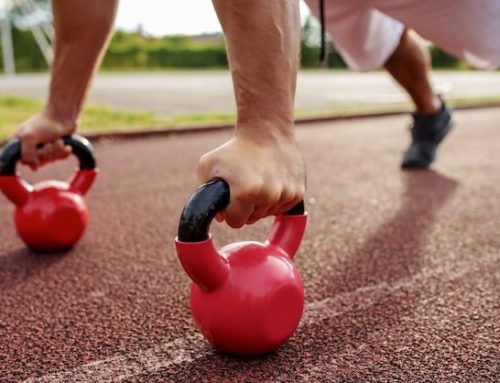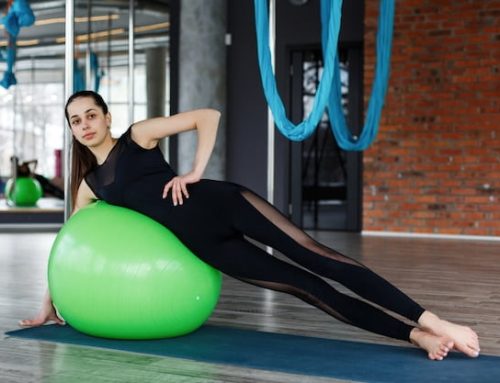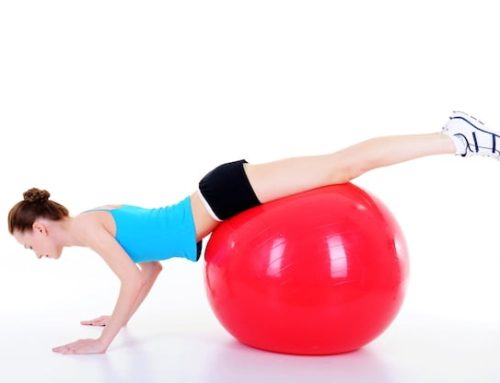Bouncing on a Stability Ball: A Fun and Effective Training Method
Using a stability ball, also known as an exercise ball or Swiss ball, is a great training tool that can provide a low-impact workout while improving strength, balance, and stability. One of the most fun and challenging exercises you can do with a stability ball is bouncing on it. In this article, we will explore how to bounce on a stability ball and why it’s worth incorporating into your fitness routine.
Why Bounce on a Stability Ball?
Bouncing on a stability ball can be a fun, challenging, and effective way to improve your fitness level. It engages your core muscles, helps improve your balance and coordination, and can even be a stress-reliever. Additionally, bouncing on the ball can improve your cardiovascular endurance, burn calories and improve your posture.
How to Bounce on a Stability Ball
Bouncing on a stability ball may look easy, but it requires practice, patience, and proper technique. Here are some steps to follow:
Step 1: Choose the Right Size Ball
Selecting the right size ball is critical for your safety, comfort, and success. If the ball is too small or too big, it may cause discomfort, instability, or even injury. Measure your height and choose a ball that fits your body size. For example, if you are 5’5″ or shorter, choose a ball with a diameter of 55 cm; if you are between 5’6″ to 6’0″, choose a ball with a diameter of 65 cm, and if you are taller than 6’0″, choose a ball with a diameter of 75 cm.
Step 2: Inflate the Ball
Inflating the ball to the correct pressure is essential for your safety and comfort. Check the manufacturer’s instructions for the recommended pressure level based on your ball size. Over-inflating or under-inflating the ball can cause instability, making it hard to balance and bounce. Use a pump and a pressure gauge to ensure you inflate the ball to the correct pressure.
Step 3: Find a Stable Surface
When bouncing on a stability ball, it’s essential to start on a stable surface free from any sharp objects or debris. A carpeted or rubber floor with enough space around the ball is ideal. Make sure the surface is even, and nothing can cause the ball to shift or roll.
Step 4: Warm-Up First
Before starting the bouncing exercises, warm up your muscles and joints for at least five minutes. It will help prevent injuries and prepare your body for the workout. You can do some light cardio exercises, such as jogging in place, jumping jacks, or skipping.
Step 5: Start Slowly
Begin your bouncing routine slowly to get used to the ball’s movement and build your stability and confidence. Sit on the ball and keep your feet flat on the ground. Gradually lift one foot and then the other. Once you feel comfortable, start bouncing gently by lifting your hips and pushing down on the ball with your feet.
Step 6: Practice Core Activation
Engaging your core muscles is essential to maintain balance and control while bouncing. Keep your back straight and your abs tight. You can also try lifting one leg or both and hold the position for a few seconds to challenge your balance and core strength.
Step 7: Add Variations
Once you feel comfortable bouncing on the ball, you can add more challenging variations to your routine. For example, you can bounce with one leg, do jumping jacks, or even hold a medicine ball while bouncing. Adding resistance and complexity to the exercise will help increase strength, coordination, and endurance.
Benefits of Bouncing on a Stability Ball
Bouncing on a stability ball offers several benefits for your fitness and overall health, including:
| Benefits of Bouncing on a Stability Ball |
|---|
| Improved strength, especially in the core and leg muscles |
| Better balance and coordination |
| Increased cardiovascular endurance |
| Burned calories and improved metabolism |
| Reduced stress and improved mood |
| Improved posture and spinal alignment |
| Low-impact exercise, which is ideal for people with joint pain or injuries |
Conclusion
Bouncing on a stability ball is not only fun and challenging but also an effective way to improve your fitness level. The exercise engages your core muscles, improves balance and coordination, burns calories, and improves overall health. Follow the steps we outlined above to learn how to bounce safely and effectively. Start slow and gradually increase the difficulty and intensity of the exercise over time. Bouncing on a stability ball could be the perfect addition to your fitness routine.






